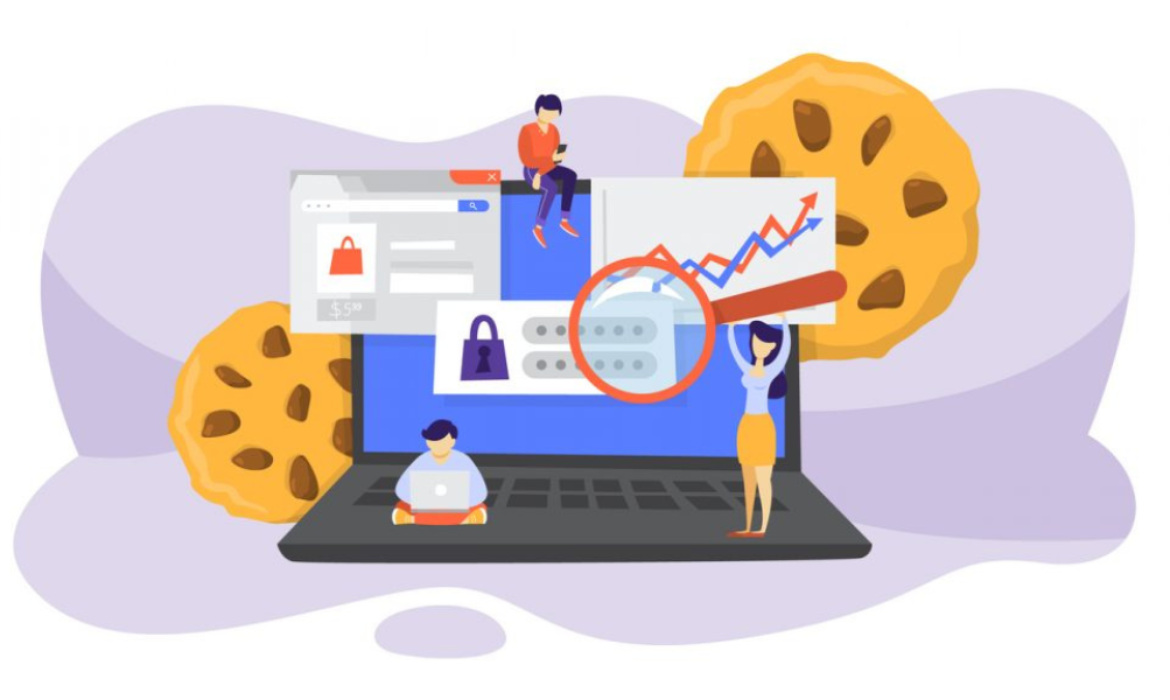Group Nine Launches First-Party Product In Wake Of Cookie Apocalypse!
In a fitting response to the impending disappearance of third-party cookies, Group Nine Media launched a first-party data solution called – ‘ In-GeNuity’, earlier this month. Group Nine is the publisher of Thrillist, NowThis, Seeker, The Dodo, and PopSugar.
Situated in New York, Group Nine Media is an American digital media holding company, and its latest product – In-GeNuity – is useful in matching brands with users based on content preferences. So, this first-party data solution will bring together a pizza enthusiast and a pizza delivery service.
Ashish Patel, the Chief Insights Officer at Group Nine, said –
We can say, here’s a segment of Papa John’s, here’s everybody that watched 30 seconds of a Thrillist pizza video over the last six months and we think that they’re a better audience to download your app.
Integrated with Group Nine’s G9 direct response, In-GeNuity allows direct-to-consumer brands to utilize the company’s first-party data archive, and then send targeted ads to consumers through Group Nine’s Facebook and Instagram handles. Some of the DTC advertisers that have worked with G9 Direct include Casper, Freshly, Discover Plus, and Fi.
With the In-GeNuity, Group Nine joins the vast club of brands and publishers who are looking to future-proof via their first-party data.
Ashish Patel got into a conversation with AdExchanger and was asked why the company chose to build a first-party data platform. Patel said that all the publishers are making such an effort in response to a “ cookie apocalypse” and the third-party tools going obsolete. He said that Group Nine is in a good position to offer unique audience segments in a way that if a user has read five or more pizza articles on Thrillist, or has watched a video pertaining to pizza for more than 30 seconds – then Group Nine can direct these people to a Pizza company.
Content preference, according to Patel, is the key point in In-GeNuity’s logic.
On being asked how the demise of third-party cookies is changing clientele demand, Patel said –
They’re asking for more retargetable data back. It’s table stakes at this point. We always thought that if you come to us and we hand you an audience segment that you’ll never come back. The sensitivity around that sharing has decreased from the publisher side, and the demand from the advertiser side has increased.
Patel also threw some light on how In-GeNuity will fit into the larger strategy with G9 Direct. He said that Group Nine Media want to start to incorporate and implement segments from In-GeNuity across all their activities, like top-funnel branded content work. The aim is to get that to a more targeted consumer at the top of the funnel, which should work for them and their partners.
In-GeNuity seems like a good response to prevailing times of the collapse of third-party cookies and will re-energize consumer experience.
End Of Third-Party Cookies, What Is There For Marketers: Takeaway!
Introduction
Google has announced that Chrome will not support Third-party cookies. Following this, other browsers are following the footsteps of Google. Also, one must not forget that Google has the largest market share of the advertisement business. Therefore, it would not be false to say that it is the end of an era and the inception of effective advertising is taking place.

V12data
Understand the behavior of Third-party cookies!

nordvpn
Since the Third-party cookies will perish soon, it is not a tutorial on how the third-party cookies work. However, you can consider this as good information. It will help you understand and devise new strategies for launching an upcoming advertising campaign effectively.
Cookies

content.adlive
Every time you visits a website, a cookie-enabled website monitors the user behavior. It stores the information in its stores so that when someone visits the website next time, it can populate the results according to the choices made by the user on their previous visit.
Cookies are small storage units that can save a proportion of data for the user, and later the advertisers can use the data to study the user behavior and ease their experience by providing them with the results according to their interests. The cookies used by the website are known as first-party cookies. It solely belongs to the website and can only be accessed by the development and advertising teams of the website. They use this data for understanding the user behavior, and populating advertisement and results based on the user’s preferences.
However, the Third-party cookies do not belong to any website. They connect to an advertising server that also reads the user behavior the same way as the first-party cookies. Third-party cookies are independent of any website and can use the data to trace the overall journey of a user on the internet and later map the data and provide advertisement across the internet as per the preferences made by the user on any channel that they might have used. This data is vulnerable and can be accessed or purchased by different organizations to fulfil their goals of running successful advertising campaigns and portraying their products so that users can be drawn to a particular website and compelled to purchase products.
How advertisers will be affected by the discontinuation of Third-party cookies?

resources.hypeanddexter
The news has created a commotion in the advertising world and left the advertisers thinking about their next step. There is a rumor that things will worsen for the advertisers, and there will not be a freeway that will lead them to success. However, it is not all true!
Yes! Ending third-party cookies will have some drawbacks, and the small advertisers who were gaining benefit from small investments in the marketing world will have to suffer for a short period. However, the ending of third party cookies has opened a void that is also a gateway for opportunities for the new ecosystems to emerge. An example of this is the emergence of Amazon who is ready to fill the void with its informative system. Amazon is in word with several companies to come together and create a new informative system that will be solely working on the Amazon ecosystem.
Soon the other companies will see the opportunity and will try to Ancash it with their ecosystems. Therefore, there is a greater chance that Google will lose its monopoly in the advertising world.
Firstly, it will help the advertisers to frame their campaigns better. Keeping in mind their needs and the audience they want to reach. Secondly, it will ensure that the user data is safe and secure. If there is a breach user will know whom to blame.
The step to end the Third-party cookie is an aftermath of continuous interrogation and questioning about the security of user data by authorities of various countries. Companies like Google and Facebook have faced a lash from government authorities for their failure to prevent the security breach on their server. Hence, the discontinuation of Third-party cookies is seen as a positive reinforcement to prevent the user data from getting public and sold on the dark web.
Due to this step, there will be more transparency, and advertisers can benefit from it along with the users. It will lead to an authorized sharing of data with authorized publishers and with trusted partners only. Hence, creating a secure ecosystem for all.
It will lead to security, and now the advertisers can even make a stronger bond with the customers as the end-users will be able to put deeper trust in the brands. The approach will end the leakage of the data to unauthorized sources. It will give an upper hand to the brands which customers trust and ultimately eliminate the untrusted brands creating a sustainable ecosystem. However, this does not mean that new brands can not emerge. They will have to go through vigorous security checks and have to prove their loyalty to the customer and promise the security of their data.
Revolution has started!

Adweek
The revolution has already begun! Advertisers and marketers have already started shifting their focus from third-party cookies to first-party data. It is a good thing as there will not be any manipulation in the data received from the first-party websites and the campaigns can be run effectively generating better results for the advertisers.
In the age of pandemic, people were forced to shop online on a more frequent basis compared to earlier. Hence, the first-party data can prove to be highly useful for the advertisers as things have started to relax. Advertisers approach the user more confidently with trusted data provided by the authenticated websites.
Yet, there is a larger population of advertisers who are still relying on third-party data. According to research conducted by Forrester for Permutive, it was concluded that approximately 41% of marketers are still relying on the data generated by third-party vendors. However, they must understand that it is a peak time to change their approach or they will perish along with the third-party data suppliers. Hence, it is time to get rid of the old ways and adapt to the change.
The Future is here!
As the sun is setting for the third-party cookies, it is expected that approximately 95% of the web will become anonymous. Therefore, creating a huge void on the web providing a basket of opportunities for new ecosystems to emerge and establish a milestone and registering their name and catering for a huge audience.
It is crucial to note that cookies will be of paramount importance in the future. Publishers will have to establish the connection with the users using the cookies, and there will not be another way around.
Using the first-party cookie data by the publishers can build an effective strategy to overcome failures. They will get the data directly from the websites instead of putting their trust in any third-party vendors.
Google has announced its Federal learning of Cohorts (FLoC) which will determine the preservation of privacy. Hence, providing a mechanism that will help advertisers select advertisements based on the user interest.
The cohorts at the publisher’s end will ensure that privacy is maintained preventing leakage of data. It will also allow them to gather and categorize information, as the data and inventory will be connected.
Even though the collection of data via first-party channels will get painless and authentic. Yet, advertisers are in dilemma and unsure about moving to a first-party ecosystem. However, there is no need to panic! It’s all about finding the right partner who can welcome you to their ecosystem and make you feel like family.
Conclusion
We understand that many of you are looking for answers to this problem. However, it is not a time that one should spend worrying. It is an opportunity that must be explored for building a strategy and start experimenting with the ecosystems. It will help you gain momentum and have a better understanding of the ecosystems. Remember that we live in a world of uncertainty, and being prepared for the unexpected is the best we can do.



